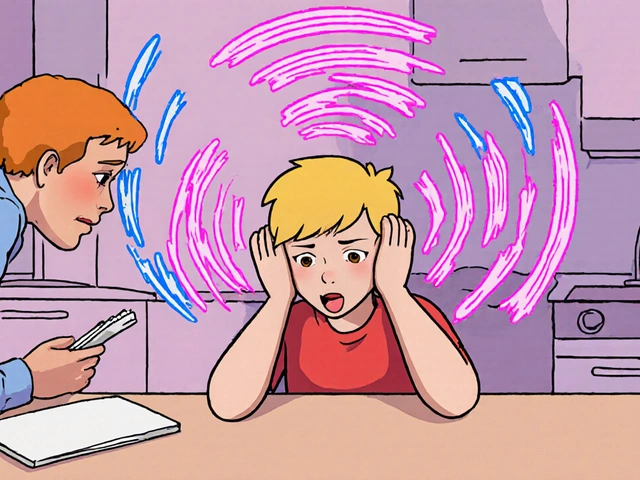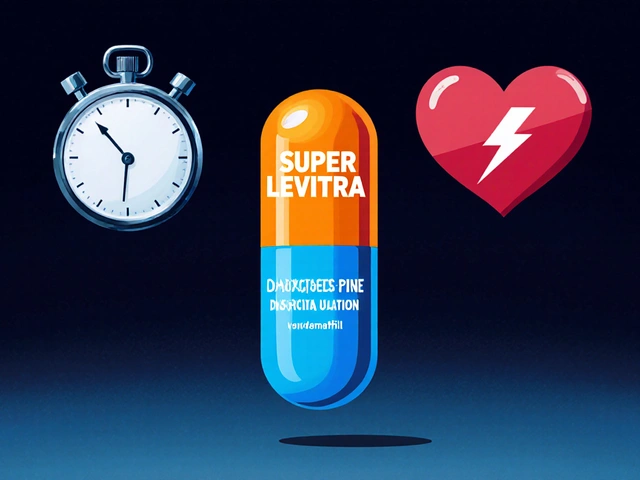Imagine trying to sleep, but your legs keep tightening on their own, or going through the day with sudden muscle cramps that just won’t quit. This is an everyday reality for people who deal with muscle spasticity—an issue that messes with everything from brushing your teeth to crossing the street. Doctors hand out prescriptions, but unless you’ve wrestled with these spasms yourself, you may not realize what a difference the right medication can make. Zanaflex (the brand name for tizanidine) is one of those medications that sits in the toolbox for folks fighting muscle tightness, injuries, or conditions like multiple sclerosis. It’s not flashy, but it’s got a reputation among those who need to stay moving despite their muscles pushing back.
What Is Zanaflex and How Does It Work?
Zanaflex—also known by its generic name, tizanidine—is a prescription muscle relaxant. It’s not built for athletes looking for a boost or for the average sore back, but for people struggling with real, severe muscle spasms. Doctors reach for it when they want to dial down excessive muscle tone, especially in conditions like multiple sclerosis (MS), spinal cord injury, or even some serious back issues.
Zanaflex belongs to a drug family called alpha-2 adrenergic agonists. Here’s the simplified science: it works right at the nerve centers in your brain and spinal cord, blocking some of the nerve signals that trigger spastic, overactive muscles. The result? Less of those unwanted, jerky contractions that disrupt your day (and night). It doesn’t fix the underlying nerve issue, but it helps you manage the muscle symptoms.
The effectiveness shows up pretty fast—most people notice relief within 1-2 hours after taking their dose. The peak effect usually happens after about 2 hours, and the muscle-relaxing relief hangs around for about 3 to 6 hours. That short duration is both a blessing and a curse: it’s great for people who need relief on and off through the day, but it means you might be taking several doses to stay comfy.
One thing that sets Zanaflex apart is its flexible dosing. Doctors can tailor it to your lifestyle. Need help just at bedtime? Take a dose before you sleep. Wake up with a stiff, locked-up body? Take it in the morning. It’s not like some medications where you need to keep an exact clock; it’s about fitting the relief around your toughest times of day.
Want another reason docs like Zanaflex? It’s less likely than stuff like baclofen or cyclobenzaprine to cause serious drowsiness—but don’t get me wrong, you’ll still need to see how it affects you. The FDA approved it in the United States in 1996, but European countries had forms of tizanidine available earlier. It’s a muscle relaxant with a long track record and some loyal users.

Benefits, Dosage, and Cautions: What to Know Before Taking Zanaflex
The main reason anyone takes Zanaflex is simple: relief from nagging, painful muscle spasms that don’t let you live your life. This is especially true for people with MS, Lou Gehrig’s disease (ALS), spinal cord injuries, or stroke survivors who deal with limbs that tighten up at the worst times. Zanaflex can also be used for muscle tightness from back injuries, but it’s not usually the first choice for basic strains—doctors reserve it for tougher cases.
Zanaflex isn’t a one-size-fits-all pill, especially when it comes to dosage. Here’s where things get specific: you’ll often start with something small, like 2 mg, maybe just once or twice on the first day. Your doctor might ask you to try a low dose, see how your body reacts, and then, if all goes well, slowly ramp up—sometimes to 8 mg every 6-8 hours (but never more than 36 mg in a day). Why all the caution? Tizanidine acts fast, but it can cause blood pressure to drop, make you feel dizzy, sleepy, or even a bit loopy. You’ll want to avoid driving or using heavy machinery until you know how the meds hit you.
Don’t play fast and loose with your medication: taking more than prescribed or adding in other muscle relaxants can cause nasty trouble, like severe drowsiness, confusion, or even overdose. Skipping doses or quitting suddenly is another mistake—Zanaflex can cause withdrawal symptoms like high blood pressure or muscle spasticity bouncing back with a vengeance. Always work with your doctor when changing the dose or thinking about stopping.
Pay attention to what you’re eating or drinking, too. Zanaflex is famous for interacting with certain foods. For example, taking it with food (especially fatty meals) can boost the amount your body absorbs, leading to stronger effects—or side effects. Grapefruit juice is a no-go; it messes with how your body breaks down the drug. Is alcohol safe? Not really. Mixing tizanidine with booze can turbocharge drowsiness and other side effects. It's like stacking two sleep aids on top of each other—probably not what you're aiming for if you want to stay alert.
The list of potential side effects isn’t short. Some are pretty tame: dry mouth, weakness, tiredness. Others are more dramatic—like severe low blood pressure, which can leave you barely standing. Less common (but serious) are liver problems, hallucinations, or even a weird slow heart rate. If you see yellowing of your skin or eyes, or notice severe nausea and pain in your upper stomach, get medical help quickly. Doctors typically run blood work to check your liver right before you start and during treatment. You want to catch problems early, before they snowball.
Check out this quick table of common side effects based on clinical data:
| Side Effect | Frequency (%) |
|---|---|
| Drowsiness | 48 |
| Dry Mouth | 49 |
| Weakness | 41 |
| Low Blood Pressure | 33 |
| Dizziness | 16 |
Tell your doctor about all the meds you’re taking. Certain antibiotics (like ciprofloxacin and fluvoxamine) can dramatically raise tizanidine levels and send you into slow-motion mode—or worse. Other drugs that lower blood pressure or make you sleepy will also play badly with Zanaflex. Even over-the-counter sleep aids can cause problems when mixed in.
For people with kidney or liver issues, Zanaflex might be extra risky—the drug can linger longer in the body and raise odds of side effects. If you’re older, start low and go slow. Kids and teenagers? Zanaflex is rarely prescribed; safety and effectiveness for younger folks haven’t been fully nailed down by studies. Pregnant or breastfeeding? Nobody’s sure how safe it is, so it’s usually a last resort when nothing else works.
- Don’t crush the tablets or open capsules unless asked by a doctor—formulation really matters here.
- Set alarms for your doses. Because it leaves the body quickly, missing a dose can mean a sudden return of muscle tightness.
- If you’re trying to taper off Zanaflex, work with your doctor over a week or more. Withdrawals can be rough if you go too fast.
And don’t forget to track your symptoms over time. Apps or simple notebooks work wonders for spotting if the medication is actually helping—or if the side effects outweigh the benefits. Your doc will love you for it, and it could save you a lot of guessing games at your next appointment.

Real-Life Experience, Tips, and Lesser-Known Facts About Zanaflex
Talk to people who rely on Zanaflex, and you’ll hear a mash-up of stories. Many folks feel like they’ve finally found a way to get out of bed in the morning or sleep through the night for the first time in years. Others have complaints: the drowsy hit that shows up even at tiny doses, or the weird, foggy feeling that sometimes doesn’t let up for hours.
One thing that comes up a lot: adjusting how you take the pill can totally shift what happens. Some people swear by taking it right before bed if they’re sensitive to sleepiness, while others find it gives them a few hours of solid movement that helps with morning routines. There’s no universal answer, so it’s all about trial, error, and conversation with your doctor.
If you notice that Zanaflex doesn’t always work the same every time, you’re not imagining things. Whether you eat a meal, how much you move, or even minor changes in your health can all influence how strongly the medication works. The tablet and capsule forms even behave a little differently: capsules can be sprinkled on applesauce (which some people prefer if they have swallowing trouble), while tablets are more standard but can deliver a slightly different punch.
Longtime users share some clever tips: keep a water bottle handy for dry mouth. Plan your tasks after a dose, giving yourself time to rest if drowsiness hits. Tell friends or coworkers about the medication, especially if you need help or a quick break during a tough spasm. Try to keep a regular schedule—your muscles are less likely to surprise you if they know what's coming.
Tizanidine comes with a risk of something called rebound spasticity. This means that if you suddenly stop taking the medicine, your muscle tightness could come back even worse than before. It's not just uncomfortable—sometimes it's dangerous, especially for people who rely on moving around safely to avoid falls or injury. So, if you want to change your dose or stop, always build a plan together with your doctor.
Another little-known fact: Zanaflex is sometimes used "off-label" by doctors for things like migraine headaches or certain nerve pain conditions. Not everyone responds the same way, so don’t expect miracles outside of muscle spasticity relief. Still, these uses are being explored because of its effects on nerve pathways that link pain and muscle function.
When you’re figuring out if Zanaflex is right for you, it pays to remember that muscle relaxants come in lots of different flavors. Some, like baclofen or gabapentin, target spasticity with other tricks up their sleeves. Others, like diazepam, are a lot more sedating but may be better for certain types of pain. It’s not unusual for someone to try two or three medicines before landing on the one that lets them live as close to normal as possible.
If you’re worried about the cost, generic tizanidine is usually much cheaper than the brand-name Zanaflex, but always double-check with your pharmacy. Insurance coverage varies wildly, so ask about discounts and patient assistance if you’re on a budget.
It’s worth checking local laws, too. Zanaflex isn’t a controlled substance in most states, but some places pay closer attention to muscle relaxant prescriptions because of their sedative properties. If you travel, carry your original prescription bottle to avoid awkward conversations or hang-ups at security.
The million-dollar tip? Stay honest with your healthcare team. Zanaflex (and meds like it) work best when you keep the doctor in the loop about changes in symptoms, side effects, and how the drug fits into your routine. It's easy to let muscle pain wear you down until you call it normal—don’t settle for misery when real solutions are out there.
So, if stubborn muscle spasms are chewing up your days, Zanaflex is a tool worth talking about. It’s not magic, and it comes with its own quirks, but with smart use and a bit of patience, it might just help you get back in the driver’s seat of your own life.






